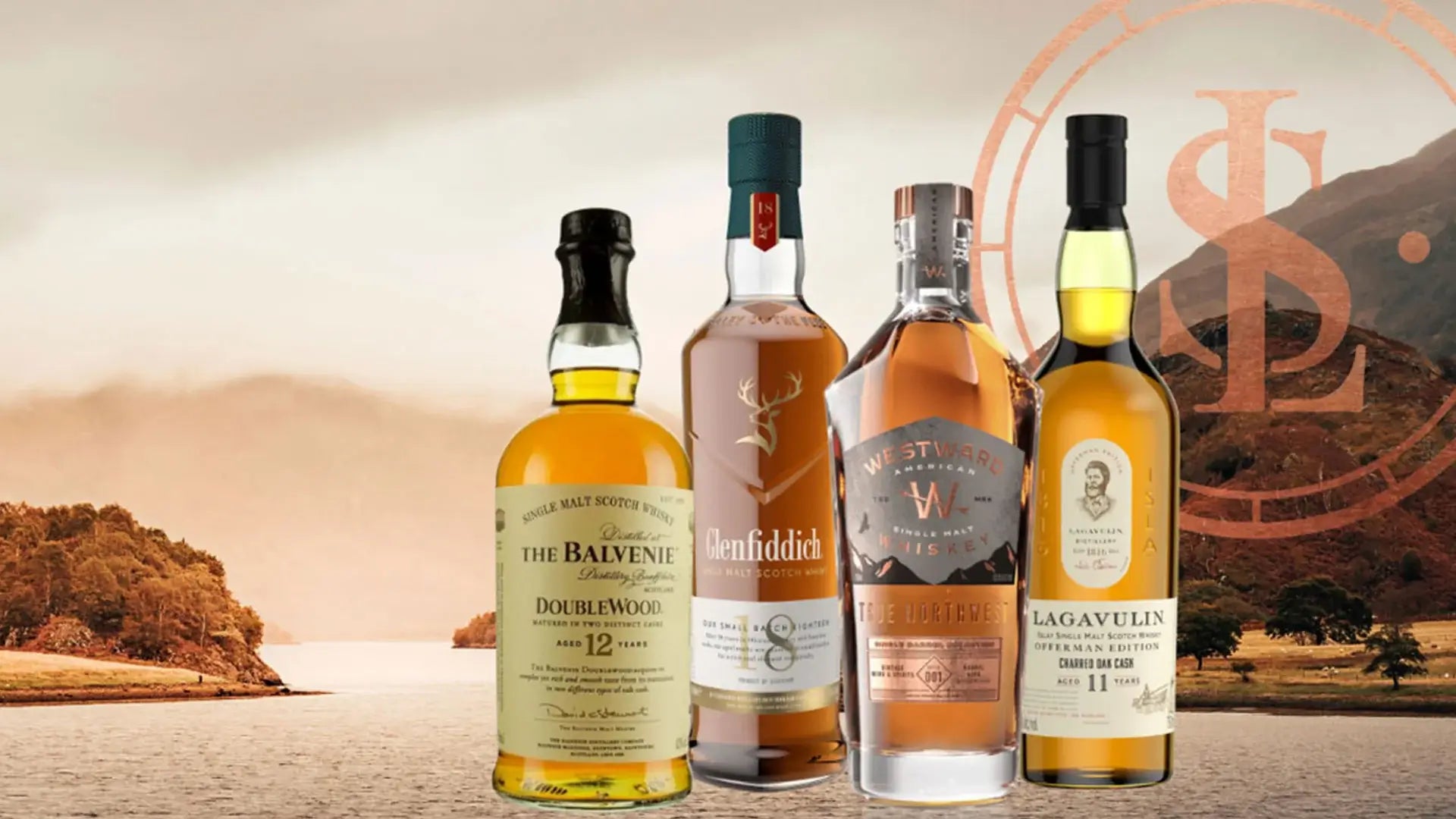When it comes to Scotch whisky, the debate between single malt and blended varieties is a spirited one. Understanding the distinctions can enhance your appreciation and help you choose the perfect dram for any occasion. In this article, we'll delve into the meanings behind single malt and blended whiskey, comparing their production methods, flavor profiles, prices, and ideal settings.
Main Differences:
- Production: Single malt is made from malted barley at one distillery; blended Scotch combines malt and grain whiskies from multiple distilleries.
- Flavor: Single malt tends to be richer and more complex; blended Scotch is smoother and more balanced.
- Price: Single malt is generally more expensive due to its exclusive production, while blended Scotch is more affordable.
- Versatility: Blended Scotch is often used in cocktails, while single malt is typically enjoyed neat.
- - Occasion: Single malt appeals to whisky enthusiasts; blended Scotch is great for casual drinkers.
Single Malt Scotch Whisky

Single malt Scotch whisky is a spirit crafted at a single distillery using malted barley as the sole grain ingredient. According to Scottish law, it must be distilled in pot stills and aged in oak barrels in Scotland for a minimum of three years. The term "single malt" signifies that the whisky comes from one distillery, ensuring a unique character that reflects the distillery's techniques and the region's terroir.
Production Process
- Malting: Barley grains are soaked in water and allowed to germinate, converting starches into fermentable sugars.
- Kilning: The germinated barley, known as "green malt," is dried in a kiln. In some regions, peat is used during this process, imparting a smoky flavor.
- Mashing and Fermentation: The malted barley is ground and mixed with warm water to extract sugars, creating a liquid called "wort." Yeast is added to ferment the wort into a beer-like liquid known as "wash."
- Distillation: The wash is distilled twice in copper pot stills, concentrating the alcohol and refining the flavors.
- Aging: The spirit is aged in oak casks, often previously used for bourbon or sherry, which contribute additional flavors.
Flavor Profile
Single malt Scotch whiskies are celebrated for their rich and complex flavors, which can vary widely depending on the region:
- Speyside: Fruity and sweet, with notes of apple, honey, and vanilla.
- Islay: Bold and smoky, featuring peat smoke, sea salt, and medicinal notes.
- Highlands: Diverse flavors ranging from floral and fruity to spicy and robust.
Popular Brands
- Glenfiddich: Known for its smooth and fruity 12-year-old expression.
- The Macallan: Renowned for rich, full-bodied whiskies aged in sherry casks.
- Lagavulin: Famous for its intense peat smoke and maritime character.
Blended Scotch Whisky

Blended Scotch whisky is a combination of single malt whiskies and grain whiskies from multiple distilleries. Grain whisky is typically made from grains like wheat or corn in column stills, resulting in a lighter spirit. Master blenders skillfully mix these whiskies to create a product with consistent flavor and quality.
Purpose of Blending
- Consistency: Ensures each batch tastes the same, maintaining brand identity.
- Balance: Combines different flavor profiles for a smooth and approachable whisky.
- Affordability: Inclusion of grain whisky makes it more cost-effective.
Flavor Profile
Blended Scotch whiskies are known for their smoothness and balance, making them accessible to beginners. They often exhibit:
- Soft Vanilla and Honey Notes
- Light Fruity Flavors
- Gentle Smoke (in some blends)
Top Brands
- Johnnie Walker: Offers a range from the approachable Red Label to the premium Blue Label.
- Chivas Regal: Known for its smooth and rich 12-year-old blend.
- Dewar's: Celebrated for its honeyed notes and subtle smoke.
Which is Better: Single Malt or Blended Scotch?

The choice between single malt and blended Scotch ultimately comes down to personal preference and the occasion.
Flavor Complexity vs. Smoothness
- Single Malt: Offers a complex and robust flavor profile, appealing to whisky connoisseurs who appreciate depth and regional characteristics.
- Blended Scotch: Provides a smoother, more balanced taste that is easy to enjoy, especially for those new to whisky.
Price Considerations
- Single Malt: Generally more expensive due to exclusive production methods and longer aging.
- Blended Scotch: More affordable, making it suitable for everyday enjoyment and mixing in cocktails.
Occasions and Versatility
- Single Malt: Ideal for sipping neat or with a drop of water to savor its nuances; perfect for special occasions or contemplative enjoyment.
- Blended Scotch: Great for social settings, parties, or as a base in classic cocktails like the Whisky Sour or Rob Roy.
Conclusion
Both single malt and blended Scotch whiskies have their own merits. If you prefer a complex, region-specific flavor and are willing to invest more, single malt is the way to go. If you enjoy a smooth, versatile whisky that's friendly on the wallet, blended Scotch is an excellent choice. Whichever you choose, both offer a taste of Scotland's rich whisky heritage.
















This article provides a clear and detailed comparison between single malt and blended Scotch whiskey, making it easier to understand their differences.
Nice, informative article. Neglected Lowlands and Campbeltown which are nicely discussed in your last newsletter. The two together are very useful. Thank you.